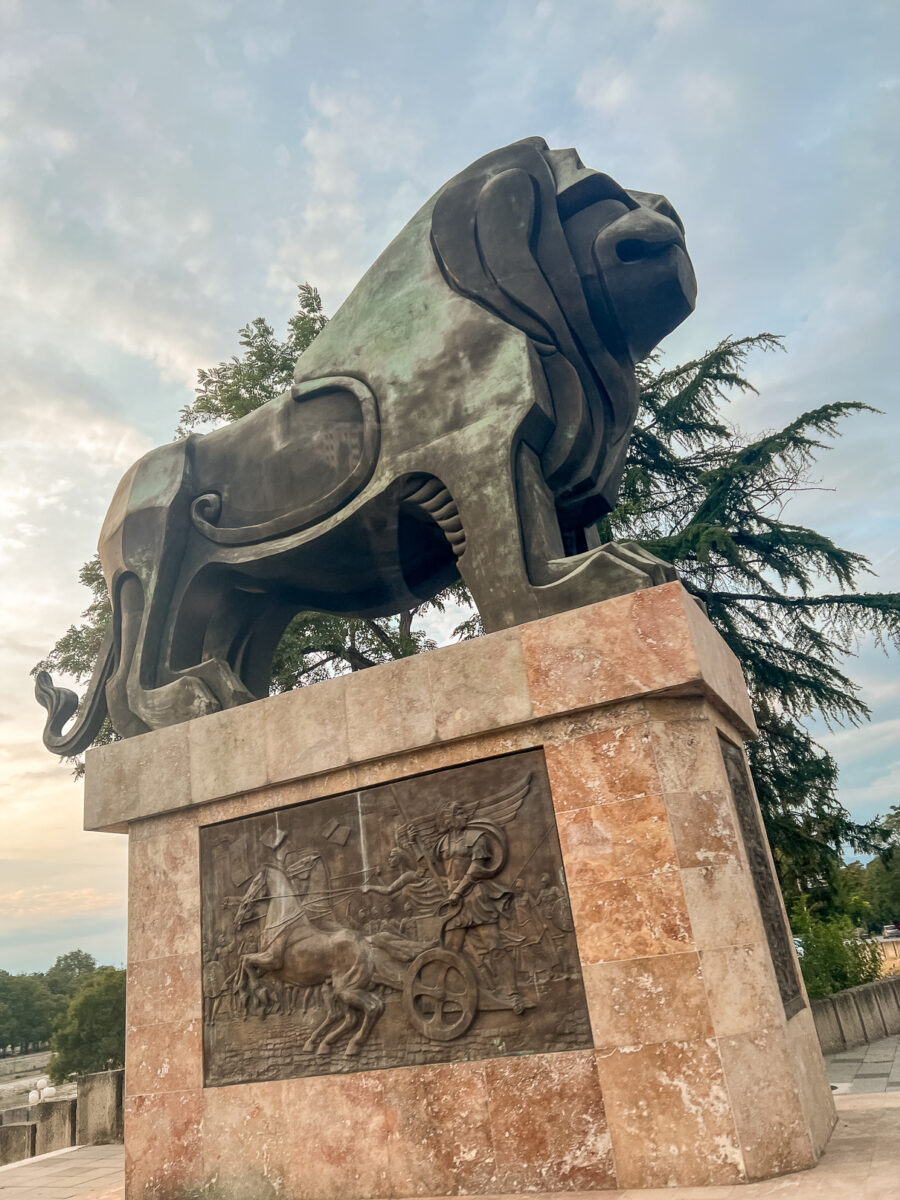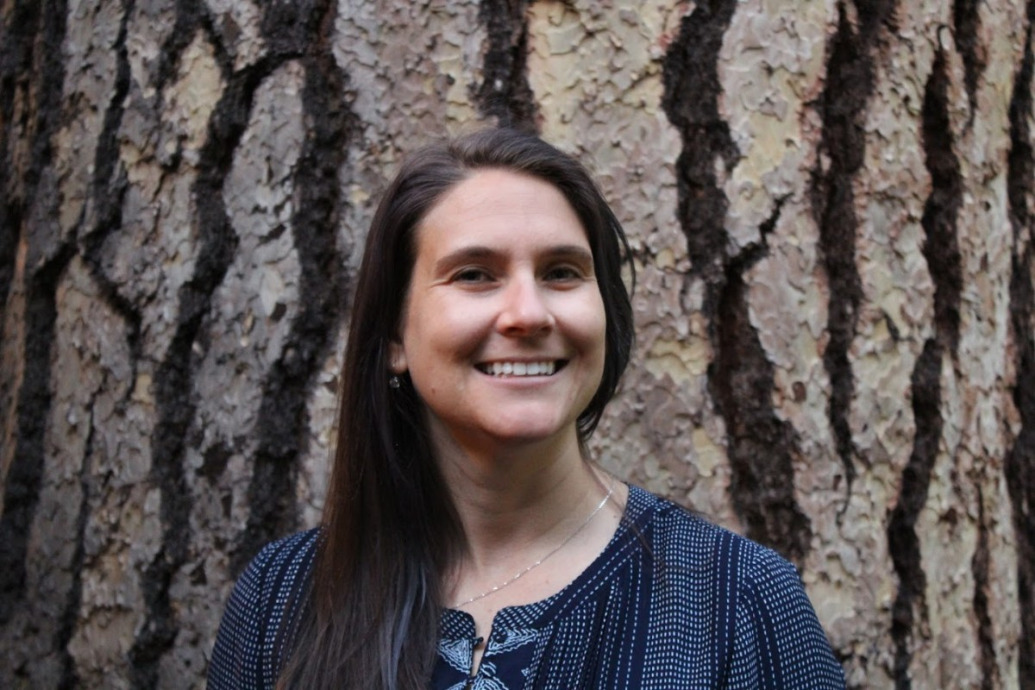After a long day of driving from Sophia and Rila Monastery, we crossed the border into North Macedonia and reached the capital city Skopje. As usual, our bus driver Dragan squeezed into another tight spot right in front of the Marriott Hotel Skopje so that we could easily disembark.

We got in to the room and waited for our luggage to arrive so we could shower and freshen up before the evening’s events. It took a lot longer than usual so we eventually called the front desk to accelerate the process, which immediately worked. The room was comfortable with good AC, with another modern transparent see-everything shower situation just next to the bed.


While the hotel was comfortable, its location was spectacular. Little did we know, upon exiting the lobby and making a swift left, we poured into the main Skopje square, leaving us speechless. Even though I picked up finishing this blog series nearly a year later, the memories of what I saw that day are seared into my brain. Incredible, larger than life, towering, monuments and history of Alexander the Great spectacularly rising above every square and bridge in the historic area of Skopje. Just wow.





Nida knew this would be a highlight of our trip, and built in plenty of time for lollygagging and indulging in dumbfounded wonder at the enormity and multitude of these statues before our dinner reservation. Everyone was floored, and all anyone wanted to do was take pictures and enjoy the majesty of Skopje. Nobody was prepared for this, and the element of surprise made it all the more magical. After every twist and turn, some new spectacle appeared. In the morning we would get a walking tour and hear more of the history, but tonight was for immersion, and soaking in Skopje at a leisurely pace.









There are over over 100 statues in Skopje, although the exact number is debatable, and often positioned as wagered bets among the locals. While there are many grand statues of Alexander the Great and other Greek heroes, there are also many military heroes and memorials from recent times, ranging from the fantastic to the mundane. As a result, Skopje is often referred to as the “the Capital of Kitsch” due to the resulting mélange.
We strolled to dinner across a bridge and down a street, also seeing visiting with some of the cat residents of the city. Arriving at our restaurant, the Old House, the night kept getting better and better, and the traditional Macedonian restaurant opened up into a private courtyard area where we would dine and continue enjoying the lovely Skopje night, where the weather cooled down. Dinner was lovely, served family style in the middle of the table, where we got to try a smorgasbord of meat and vegetarian traditional Macedonian dishes, coupled with the local beer and wine. Everyone was is great spirits!





We also enjoyed seeing several feline friends around, despite the restaurant not wanting them there and shooing them away from guests.
After dinner, the group disbanded, with Alex looking for a jazz club, and Brendan and I looking for a speakeasy or cocktail bar. The highest rated, most unique one we could find was back across the river and upstairs, in a somewhat communist looking building. It was called Mixology Bar Owl. While it didn’t beat the experience we had in Sofia, Bulgaria, it definitely offered a unique vibe and a friendly bartender who really put effort into his craft.



After a few drinks, we decided to call it a night, but not before another slow meander around this literal city of giants. We went to bed completely satisfied, and indulged by the spontaneous wonder that only travel and adventure can bring.
The next day we enjoyed a nice buffet breakfast the Marriott Hotel Skopje in The Distrikt restaurant, and also appreciated the historic map of Macedonia broken up into regions.

Then we met our tour guide for the day, Snesanja (which meant Snow White), and started off with a drive around Skopje, with our first stop at the Skopje Fortress high on the hill, giving a good panorama of the city. The Kale fortress was a Roman remnant, hailing from the 6th century AD. Similar to the other cities we’d visited, we saw layer upon layer – Greek, Roman, Christian, Ottoman, Communist, modern day – sprinkled throughout. It was rebuilt after an earthquake destroyed it in the 1930s.








The views were hazy and Brendan was frustrated with me because I had to walk the entire length of the wall, making us late back to the bus. I had no excuse, but I did enjoy trying to frame this picture, which was a homage to the women’s part in Yugoslavia’s victory over fascism after World War 2. The name of the sculpture is “Strength, Glory & Victory” by Jordan Grabul (1954). We always enjoyed the strong depiction of women in Brutalist art.

We then continued driving around, receiving information about the city. One of the highlights was seeing the lion sculpture, guarding one of the bridges.



Eventually we parked near the Mustafa Pasha mosque, as the rest of our tour would be on foot. This was the oldest mosque in the city, built in 1492 by Çoban Mustafa Pasha, who was part of the court of Sultan Selim. The mosque was largely in tact and not destroyed by the earthquake. Inside, the body of Umi, the daughter of Mustafa Pasha, is entombed in the türbe next to the mosque.



Outside, we enjoyed views of the rafters of the old city (as well as people hanging out on the roof!, and also the rose garden, where a few cats could be found.



On our walk down from the mosque to the old Ottoman area, we stopped at an old inn build in the 15th century called Kapan Han, which led into a restaurant and then the grand bazaar.



We had walked through the bazaar the night before in order to check out the night vibe, which was bustling but with nighttime energy instead of daytime energy. During the day, it was more about shopping and bargaining with the local merchants. Nida did some bargaining of her own and bought some special Turkish sweets for Jay’s birthday.





Exiting the Turkish bazaar area, statues once again began to emerge, some classical and some modern, and many of Alexander the great. The diving status is an homage to back in the day when you could swim in the Vardar River.









We then got back in the town square area by the main, oversized statue of Alexander the Great on his horse Bucephalus. The conquering of Alexander the Great, and the subsequent “Alexander the Great syndrome” (what else to do, now that we’ve conquered!?) is known throughout the West and part of grade school classical history lessons. But seeing it come to life was another thing entirely.



We didn’t realize Alexander hailed from Macedonia directly, which was more on the periphery of the Greek center of power, nor did we realize his father was Phillip II (also depicted in many statues across the city), who established a federation of Greek states and paved the way for the consolidation and conquering under his son, Alexander. Phillip II was later assassinated by the captain of his bodyguards, which changed the course of history as power passed to his son at the age of 20. As we know, Alexander the Great had a bottomless appetite for conquest, and after he consolidated power across the royalty (including killing several family members, with some executions ordered by his mother), became unstoppable until his expansion into India. At this point his empire grew too vast to many, and he returned to Persia to consolidate and govern, which ultimately let to his demise in Babylon. There are multiple accounts and lore of his death, but the most likely was illness. Similarly, there are multiple accounts of his gravesite.
Most of Skopje was devoted to Alexander the Great, with other characters coming into the periphery more as “in relation to” or “fathered” or “mothered” or “fought beside” or “loved”, as opposed to that individual being the leading storyline themselves. Alexander’s mother was Olympias of Epirus, daughter of Neoptolemus I, who was also the mother of Cleopatra. In one of the statues honoring her, she was simply described as “the mother of Alexander”. Alexander the Great had once said that his heir and kingdom would go “to the strongest” and expected a tournament to determine the fate of the kingdom. Alas, infighting and confusion took hold instead, leading to the inevitable bureaucratic collapse of the empire. Today, we can simply look back in awe at his conquering spirit, and observe his towering statue in Skopje as his final monument.


Back in the main square, we then shifted our attention to modern times, and especially to the Holocaust. The rest of the afternoon would take us through the Skopje Holocaust museum, which was very well done, and also told the story of the Jewish diaspora including the storyline of the Sephardic Jews, who we often hear little about in the US.



On the way from the main square to Maria Teresa’s house, we also passed a neat streetlight knit wrap with the city’s name in Cyrillic artistically woven into it. We completed the day with a visit of Maria Teresa’s home, where she stayed from 1920-1928. She was ethnically Kosovar Albanian, born in Skopje, so many countries “claimed” her – Albania, North Macedonia, Kosovo, and also India for her service there. The house was not very interesting, but did have some representations are artifacts that were common to households in the Ottoman Empire at the turn of the century. Her significance in Skopje also led to a number of statues throughout the city honoring beggars and the humility of poverty.




We left the Maria Teresa and the final components of the Gate 1 tour a few minutes early in order to meet the driver we had arranged with the hotel to take us to Pristina, Kosovo, for an afternoon tour – more on that soon!

[…] our Skopje tour, Alex, Bobby and Ann met our driver organized through the Marriott Skopje hotel in the lobby for […]